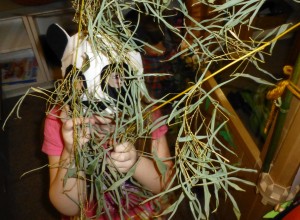A child walks up to you and offers you a banana. What do you do? You should say “Thank You” because in our culture, that body language says, “Here, have this banana.”
Kids can and should ask for help.
It is important that we expect our children to begin using their words to ask for specific help as soon as they learn to communicate with us. All speaking children can directly ask for help. Non-verbal children can use sign-language to ask for assistance. It is easy as parents and teachers to simply assume what our children want when they hand us their sealed snack packet or walk up to us and say, “I’m hungry”. Although, initially, this may be faster, it doesn’t allow them to practice the important skill of directly asking for help when it is needed. We can’t assume that every person our child speaks to now, and on into adulthood, will be able to automatically parse out their unspoken needs. Passive requests can be both misinterpreted or completely missed.
So, for better or worse, next time your young child walks up to you and hands you an unopened bottle of glue or tells you they are thirsty, please help them rephrase and form a question. Invite them to include a “please” and “thank you” while they’re at it. Gracious words are always welcome.

